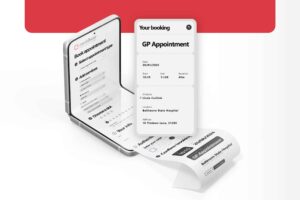Imagine locking your healthcare facility into a system that looks shiny in 2025 but leaves you outdated by 2027. That risk is real when decisions are rushed or made with too narrow a lens. The role of an EHR has expanded far beyond administrative record-keeping; it now serves as the central nervous system of a healthcare organisation, influencing patient safety, clinical workflows, financial stability, and staff wellbeing.
The consequences of a poor choice can be severe. The American Medical Association reports that 45% of physicians continue to experience symptoms of burnout, with technology frustrations such as EHR usability ranking among the leading causes. When systems work against clinicians rather than supporting them, patient care suffers and organisations lose the capacity to innovate. Facilities that select thoughtfully, however, are discovering that the right EHR empowers growth, reduces daily burdens, and strengthens patient relationships.
The EHR decision in 2025 carries more weight than compliance checklists ever could; it determines how well your organisation adapts to regulatory shifts, manages data responsibly, and continues to deliver high-quality care.
Step 1: Define Your Facility’s Current and Future Needs
Too often, when purchasing EHRs, facilities focus on today’s problems, such as slow record access or clunky billing, and fail to ask whether the same system can carry them through the next five to ten years. Start with an internal audit that examines patient volumes, service mix, compliance obligations, and the types of care your facility intends to expand into. If you are planning mergers, new clinic sites, or integration of occupational health and telemedicine services, those must factor into the decision from the outset.
Equally important is thinking about how your patients’ expectations are evolving. Patients now expect real-time access to their records, transparent billing, and the ability to communicate with clinicians outside the exam room. If your future system cannot support these capabilities, you are locking yourself into obsolescence before the ink dries on the contract.
Step 2: Engage Stakeholders in the Selection Process
An EHR touches every corner of your organisation, and leaving any group out of the selection process is a recipe for frustration and wasted money. Bringing stakeholders into the conversation early not only ensures the system fits your workflows, it also builds buy-in and eases adoption later.
Key stakeholder priorities to capture include:
- Clinicians: intuitive navigation, efficient workflows, and clinical safety tools that prevent errors rather than create alert fatigue.
- Administrative staff: reliable scheduling, billing, and reporting functions that reduce manual work and errors.
- IT teams: interoperability with existing systems, data security, and performance that avoids bottlenecks.
- Patients: user-friendly portals, mobile access, and communication tools that make them feel connected to their care.
- Leadership: compliance assurance, financial stability, and the flexibility to support long-term strategy.
When stakeholder voices are included, facilities avoid the common trap of investing in an EHR that works well for leadership but fails everyone else.
Step 3: Evaluate Core Functionality and Usability
By 2025, “basic functionality” has shifted dramatically. A modern EHR is expected to integrate seamlessly across systems, whether through HL7 FHIR standards or cross-border data exchange, and to provide a clinical safety net with medication alerts, audit trails, and real-time decision support.
Usability is equally important. If the interface adds clicks to simple tasks, it becomes a daily source of frustration for clinicians. Systems that are designed with clinicians in mind can help reduce that burden, while poorly designed ones exacerbate it. Before committing, insist on pilot runs, sandbox trials, or case-based demonstrations that simulate your actual workflows.
Step 4: Look for Advanced Capabilities That Future-Proof Your Facility
Choosing an EHR is about securing adaptability. Healthcare is changing at a pace that leaves rigid systems behind. The most effective facilities are those that invest in platforms designed to grow with them.
Advanced capabilities to prioritise include:
- Predictive analytics: tools that forecast patient demand, identify at-risk groups, and inform resource allocation.
- Integrated telehealth: virtual visits that are not tacked on as an afterthought, but built into the clinical workflow.
- Mobile-first design: interfaces optimised for smartphones and tablets, empowering both clinicians on the move and patients at home.
- Scalability: the ability to add new sites, specialities, or services without triggering system-wide disruption.
- Integration with wearables and diagnostics: expanding the patient record beyond the clinic walls.
Cloud-based systems, including Meddbase, have shown that adaptability is achievable when the software is built around a flexible framework rather than locked into static architecture.
Step 5: Prioritise Compliance, Security, and Data Protection
The regulatory and security landscape in healthcare is unforgiving. IBM’s 2024 Cost of a Data Breach Report placed the average healthcare breach at $11 million — the highest of any industry. Beyond the financial damage, breaches erode patient trust and can paralyse clinical operations for weeks.
Any EHR considered in 2025 must demonstrate not only compliance with regulations such as HIPAA and GDPR, but also proactive security features: end-to-end encryption, multi-factor authentication, role-based access controls, and tested disaster recovery plans. Ask vendors to provide transparency about their uptime record and incident response. If they hesitate, that is a red flag.
Step 6: Evaluate Total Cost of Ownership
Too many facilities focus narrowly on licence fees when calculating cost. The true cost of an EHR includes training, implementation, downtime during the transition, upgrade charges, and long-term support. Conversely, the true value is measured in savings from avoided errors, faster billing cycles, and improved patient throughput.
For example, one health system reported that automating scheduling cut average call hold times from 126 seconds to 28 seconds, while reassigning 25,000 cancelled appointments that would otherwise have been lost revenue. These are the kinds of operational returns that matter when evaluating a system’s impact beyond the invoice.
Step 7: Assess Vendor Support and Roadmap
The relationship with your EHR vendor does not end at go-live. It continues for years, and the quality of that partnership will determine how well the system serves you over time. Look carefully at how vendors deliver training for different staff groups, how frequently updates are released, and whether they provide a clear technology roadmap.
Vendors that prioritise long-term collaboration, like Meddbase, invest in continuous development and ensure their clients evolve alongside changing standards and technologies. Facilities that see their vendor as a strategic partner, rather than a one-off supplier, are the ones that achieve the greatest long-term benefit from their systems.
Turning an EHR Decision into a Strategic Advantage
Selecting an EHR is one of the most consequential choices a healthcare facility can make. It defines how effectively your organisation manages patient safety, staff wellbeing, regulatory compliance, and long-term growth. A poor decision can trap you in years of inefficiency, rising costs, and disengaged clinicians. A thoughtful one can transform your facility into an environment where technology supports care rather than complicating it.
Facilities that approach EHR selection as a strategic investment, one that demands foresight, scrutiny, and partnership, are the ones that will lead. The opportunity in 2025 is to move beyond systems that merely keep records and instead choose platforms that enable adaptability, resilience, and excellence in patient care.





